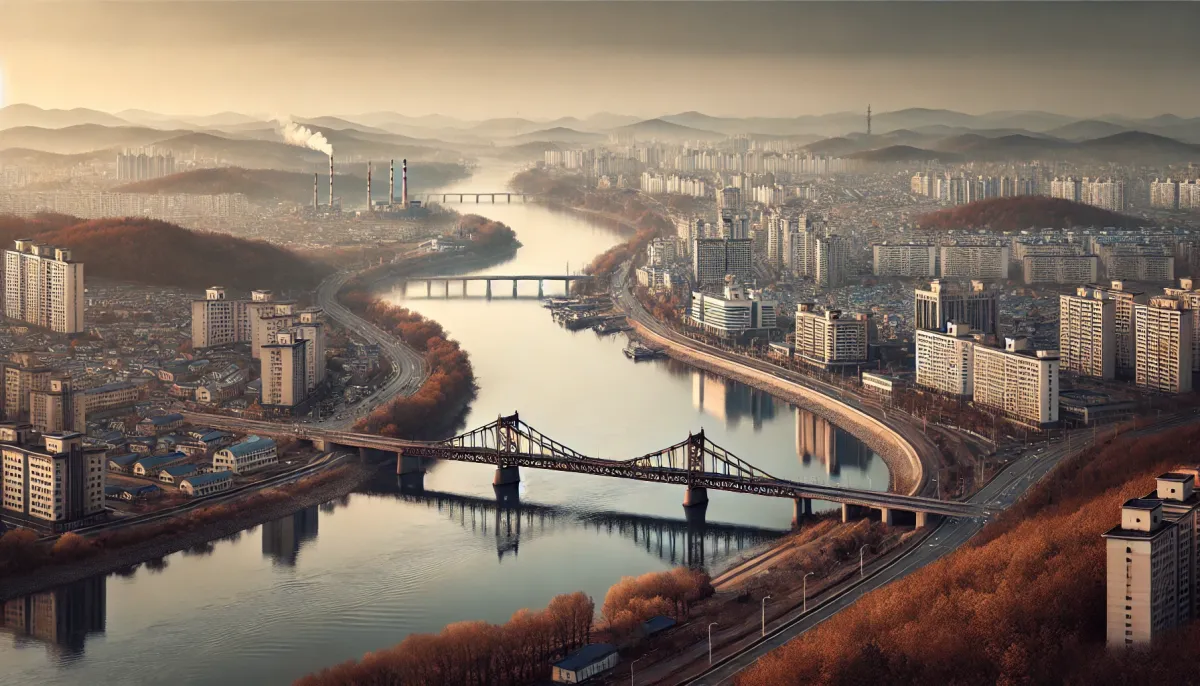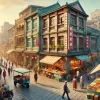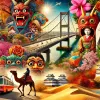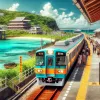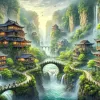Hey everyone, Mark here! I've always been fascinated by border towns, especially those less traveled by tourists. Recently, I had the incredible opportunity to explore Tumen City, a captivating little city nestled on the border of China and North Korea. It's located in Yanbian Korean Autonomous Prefecture, Jilin Province, and it's smaller than you might expect – a truly unique experience.
My Tumen City Adventure: From High-Speed Rail to Historic Sites
My journey began at Tumen North Station, a modern high-speed rail station. From there, I hopped on a local bus to reach the city center. It felt like stepping back in time; I hadn’t seen a bus with ceiling fans in ages!
After settling into a surprisingly clean and well-lit 50 RMB/night hotel room, I set out to explore. One of my first stops was a monument dedicated to Soviet Red Army soldiers who liberated Tumen in August 1945. The inscription, in Russian, honors their sacrifice. I also visited the Northeast Liberation Memorial Pagoda, its green structure standing as a testament to the region's history.
Tumen City: A Blend of Cultures and Quiet Charm
Tumen City, being part of the Yanbian Korean Autonomous Prefecture, boasts a unique blend of cultures. Shop signs are often bilingual, displaying both Chinese and Korean characters. The city's population of approximately 136,000, with Koreans making up about 57%, adds to this distinctive atmosphere.
Even though I arrived in the afternoon, the city seemed to quiet down early. The streets, though, displayed a unique calm. The reason? The northeastern part of China experiences early sunsets and cool breezes, especially during October.
A City Shaped by History and Rail
Tumen's growth is deeply intertwined with its railway history. Before the construction of the Changchun-Tumen railway, the area was a sparsely populated village. The railway, built by the Japanese during the Manchukuo period, transformed Tumen, turning it into a vital hub for resource transportation and eventually, a significant border crossing.
Even today, this history is evident in the city's street names – "Guojing Lu" (Border Road) and "Kou'an Da Jie" (Port Street) are just a couple of examples.
Tumen Port: A Glimpse into North Korea
The main attraction in Tumen City is undoubtedly Tumen Port. Standing on the border, I could easily see the mountains of North Korea across the Tumen River. The stark contrast between the vegetation on the Chinese and North Korean sides was striking. The North Korean mountains were mostly barren, unlike the autumnal beauty on the Chinese side.
The bridge spanning the Tumen River between China and North Korea, as I saw from my drone footage, currently shows no truck traffic. It seems the border has been closed since the pandemic but is rumored to reopen for group tours to North Korea in December.
Exploring Tumen Port: Bridges, Bridges, and More Bridges!
At Tumen Port, I found a stone monument with the words "Tumen Port" in traditional Chinese characters. A map showcased two bridges connecting China and North Korea: a highway bridge and a railway bridge. Across these bridges, the North Korean city of Namyang was visible, showcasing its train station, hotels, and a tower.
The Chinese side of the port displayed various attractions including a museum, square, and parks. I also took note of the bilingual signs at the customs office, with Chinese and Korean displayed alongside each other.
The Tumen River: A Border Shared by Three Nations
The Tumen River, the defining feature of this border city, originates from Changbai Mountain’s Tianchi Lake. The river’s 490-kilometer upper course forms the border between China and North Korea. However, the lower 15 kilometers serve as the boundary between North Korea and Russia, a result of historical treaties signed between Russia and China in the 19th century. This historical context adds a layer of intrigue to the region.
A Borderline Drive and Unexpected Encounters
I joined a shared car ride (100 RMB) that took me along the border. We drove past the Tumen Port's imposing gate, a testament to the region's strategic importance as a second land border crossing between China and North Korea (after Dandong). The railway line connecting to the North Korean side was clearly visible.
Along the journey, we even had a brief but fascinating encounter with a North Korean citizen, who quickly disappeared as we approached his community. We also witnessed scenes of daily life including harvesting what seemed to be rice or wheat and a glimpse of local train traffic. Driving through the sparsely populated areas along the border was truly a serene experience.
Historical Echoes and Modern Ambitions
We visited the site of a Japanese-built outpost dating back over a century. Its presence served as a poignant reminder of the region's complex and often turbulent past. The conversation with my driver turned to the potential reopening of the Tumen River’s lower course for Chinese vessels, a subject of ongoing discussions between China and Russia. While not yet confirmed, the possibility holds immense implications for the region's future.
Nightfall in Tumen City: A Different Perspective
As evening fell, I ventured to Tumen River Park, where I could see the lights of Namyang, North Korea, twinkling in the distance. The contrast between the brightly lit buildings of Tumen City and the sparseness of the North Korean illumination was quite striking. This offered a new perspective on daily life in both countries. I concluded my night with a delicious dinner at a highly-rated Korean restaurant, sampling their famous 40-year-old grilled beef and soaking in the city's unique atmosphere.
Tumen Station: From Bustling Hub to Quiet Remnant
My journey concluded at Tumen Station, a former bustling railway hub now largely inactive due to the newer, high-speed Tumen North Station. The station itself, built by the Japanese, was interesting to observe in its current form as a basketball court. Even though it’s not operational in its original purpose, it remains standing and is now more of a community center rather than a transportation hub, highlighting the dramatic shifts in the region's landscape.
